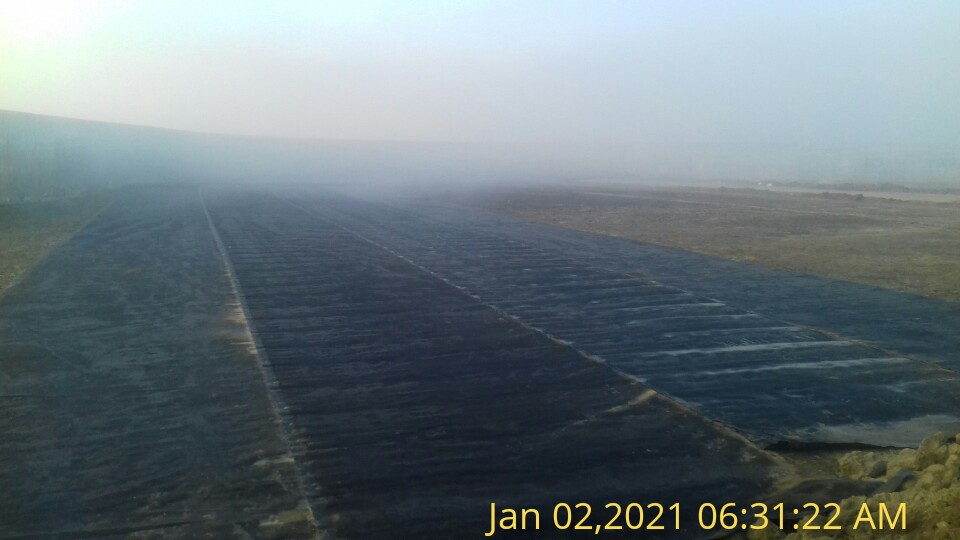High-Density Polyethylene Sheets (HDPE)

At Ocean Non Wovens, we pride ourselves on manufacturing and supplying premium-quality high-density polyethylene sheets (HDPE sheets) that cater to a diverse range of industries. Our HDPE plastic sheets are designed to deliver unparalleled performance, ensuring reliability and sustainability for your most demanding applications.
HDPE, or high-density polyethylene, is a thermoplastic polymer known for its exceptional strength-to-density ratio, chemical resistance, and durability. These properties make it the material of choice for industries such as construction, agriculture, packaging, and environmental engineering.
Why Choose HDPE Sheets? Key Properties and Benefits
1. Exceptional Durability
HDPE sheets are renowned for their high impact resistance and robustness. With a density ranging from 0.93 to 0.97 g/cm³ [1], our HDPE sheets withstand significant wear and tear, making them ideal for long-term use in harsh environments.
2. Chemical and UV Resistance
Unlike many materials, HDPE is highly resistant to chemicals, solvents, and UV radiation. This makes it perfect for applications where exposure to aggressive substances or outdoor elements is inevitable.
3. Lightweight yet Strong
Despite its durability, HDPE is incredibly lightweight, reducing transportation costs and facilitating easy handling during installation. It’s approximately six times lighter than steel while offering comparable strength in many applications [2].
4. Eco-Friendly and Recyclable
As environmental sustainability becomes a priority, HDPE emerges as a sustainable option. It is 100% recyclable and contributes to reducing environmental impact when disposed of responsibly.
5. Low Water Absorption
HDPE sheets have a water absorption rate of less than 0.01%, ensuring that they remain dimensionally stable even in high-moisture conditions [3].
Applications of HDPE Sheets
Our high-density polyethylene sheets are incredibly versatile, meeting the needs of various industries:
- Construction and Infrastructure: Ideal for lining canals, reservoirs, and landfills due to their impermeability and strength.
- Agriculture: Used for pond linings, greenhouse covers, and irrigation systems to enhance efficiency and reduce water loss.
- Packaging: Widely used in creating durable, reusable containers, pallets, and crates.
- Industrial Applications: Perfect for manufacturing machine parts, conveyor belts, and cutting boards due to its resistance to abrasion and impact.
- Environmental Engineering: Essential for waste containment systems and geotechnical applications.
Unique Insights into HDPE Sheets
1. Microtexture for Enhanced Friction
Our HDPE sheets are available with a microtextured surface to enhance friction, making them ideal for slope stabilization and other applications where grip is critical.
2. Anti-Static and Conductive Grades
For industries handling sensitive electronics, we offer anti-static and conductive HDPE sheets that minimize the risk of static discharge.
3. Customizable Thickness and Dimensions
We understand that every project has unique requirements. Ocean Non Wovens provides customized HDPE sheets, ranging from 0.5mm to 3mm thickness, and dimensions tailored to your specifications.
4. Long-Term Performance Data
Studies indicate that properly installed HDPE sheets retain their structural integrity for over 50 years, even in demanding environments [4]. This longevity ensures a superior return on investment.
5. Thermal Resistance and Flexibility
Our HDPE sheets maintain their performance across a temperature range of -40°C to 80°C, offering flexibility and reliability in extreme climates.
Technical Specifications
- Material Composition: High-Density Polyethylene
- Density: 0.93 – 0.97 g/cm³
- Thickness Range: 0.5mm – 3mm (custom options available)
- UV Stabilization: Optional (for outdoor applications)
- Recyclability: 100%
Why Ocean Non Wovens?
1. Industry Expertise
With years of experience as a leading geosynthetics manufacturer and supplier, Ocean Non Wovens has built a reputation for delivering top-notch materials that meet international standards.
2. Quality Assurance
All our products undergo rigorous quality testing to ensure they meet the highest benchmarks for durability, performance, and sustainability.
3. Tailored Solutions
We offer customized solutions to meet the unique demands of your projects, providing expert consultation and technical support throughout.
4. Global Reach
Serving clients across various continents, Ocean Non Wovens ensures timely delivery and unmatched service excellence.
Partner with Ocean Non Wovens Today
Looking for high-density polyethylene sheets that deliver exceptional performance and value? Ocean Non Wovens is your trusted partner. Whether you’re working on a construction project, an agricultural innovation, or an industrial application, our HDPE sheets provide the reliability and durability you need to succeed.
Contact Us Today!
Let’s discuss how we can elevate your projects with our premium HDPE sheets. Reach out to us now to explore tailored solutions, competitive pricing, and expert guidance.
